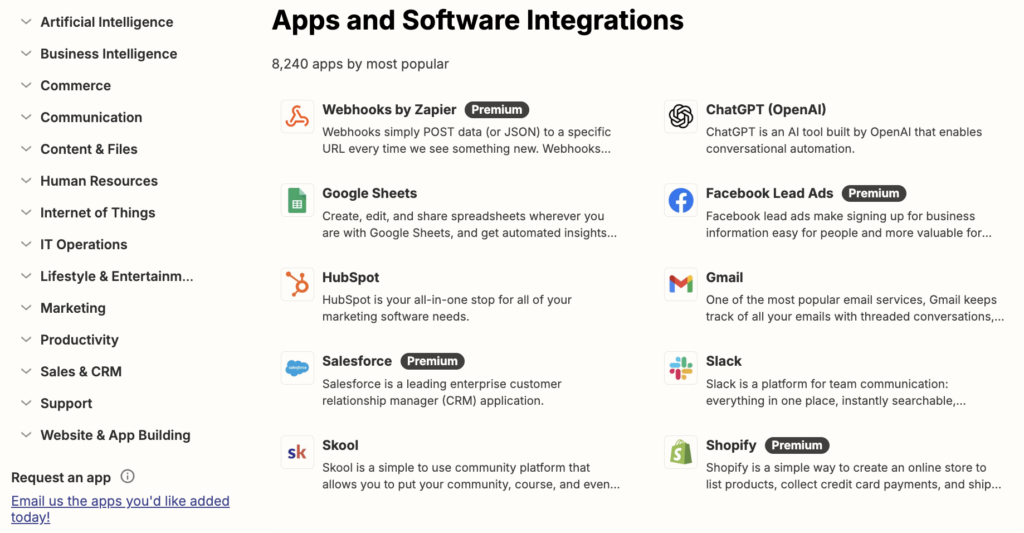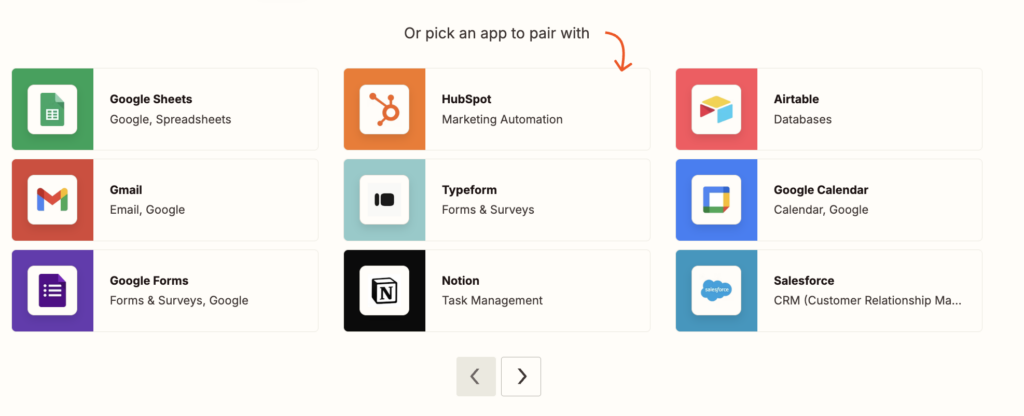4 Real Examples of Partner + Channel Marketing Campaigns
On the surface, channel marketing campaigns seems a lot like direct marketing campaigns. If you’ve already got a good thing going, why not rinse and repeat for partners?
Because each type of channel partner has a unique audience. To capture as many eyeballs as possible, partners need to cut through the noise — and sporadic email blasts, one-off webinars, boring one sheets, and recycled slides aren’t going to do the trick.
If partners aren’t jazzed by the marketing assets and campaigns you’re putting forward, prospects won’t be either.
To infuse some excitement into your channel marketing and help you think outside the box, we’ve compiled a list of things to consider when putting together a new campaign, with four excellent examples as inspiration.
But before we dive into those, let’s refresh your definition of channel marketing.
What is a Channel Marketing Campaign?
A channel marketing campaign promotes a vendor’s products or services through resellers, distributors, tech partners, or affiliates. But just because partners are the ones executing a marketing campaign doesn’t mean the vendor isn’t heavily involved in planning, setup, and measurement.
As you can imagine, most vendors want some (if not all) control over their messaging and positioning.

Without structured campaigns, partners can communicate the value of the vendor’s product in whatever way they see fit — even if it doesn’t align with the vendor’s style and tone. For channel marketing campaigns to work, both parties have to dedicate time and effort to understanding the kinds of prospects they’re targeting and telling a compelling story in a unique way.
What Should You Think About When Creating a Channel Marketing Campaign?
The most memorable channel marketing campaigns aren’t launched overnight. As you start to build out your channel partner marketing function, prioritize:
Giving Partners the Resources They Need
Yes, your partners will lean on you for specific assets and campaign guidance. But even the best marketing in the world can’t close a deal. At the end of the day, partners need to be able to tailor your messaging to the needs of specific prospects in specific verticals. And they can’t do that without top-notch enablement.
Interactive product demos, certification programs, and pre-built sales collateral ensure that partners can confidently sell and support your offering.
Want more details? Read What is Partner Enablement and How to Do It Well.
Building a Solid Foundation
If you invest time and money into your partners, they’ll return the favor. Be strategic with the partners you choose to pour your energy into — make sure they’re the ones who are committed to making channel marketing a priority, and reward the ones who follow through.
Going Beyond Traditional Campaigns
Your channel can help your brand stand out. Why not capitalize on that as much as you can? Brainstorming one or two campaigns people can’t stop talking about will have a much bigger impact on your channel revenue than running the same plays everyone else is.
Want an easy way to come up with new ideas? Try using AI to revamp your channel marketing.
Tapping Into the Larger Ecosystem
Channel marketing campaigns don’t have to be limited to one vendor and one partner. If you’ve already run successful channel marketing campaigns with one partner, why not find a way to add another that is just as committed to a joint channel marketing strategy and can get your product or service in front of more prospects?
*Helpful Tip*
In a recent MKT1 newsletter (by ex-B2B marketer Emily Kramer), she points out that “list sharing isn’t that much of a value add anymore.”
With the proliferation of data enrichment and marketing intelligence tools, it’s not like companies are struggling to get contact information. And most partners are already using account overlap tools like Crossbeam.
“So if you are doing[joint marketing] just for the list share, check to make sure it helps you in another area too,” Emily says.“If you can work together and increase value for everyone involved, you can grow super fast!”
4 Real Examples of B2B Partner & Channel Marketing Campaigns
To get your creative juices flowing, we found four examples of unique campaigns we’ve seen in the wild, including:
1. An App Directory That Boosts Vendor and Partner SEO
Company: Zapier
Zapier has a wildly popular website and blog. On Ahref’s web authority checker, it’s got a domain rating of 91, with 13 million (you read that right) backlinks. Turns out, technology partners have played a key role in scaling their online traffic.
Like most B2B SaaS companies, they’ve got a landing page for each of their integrations in an app directory:

But unlike other B2B sites, each of those landing pages links out to myriad other pages — one for every other app customers can connect it to.
For example, if you click on the Slack integration, you can start connecting Zapier and Slack for free with my email or Google account, or you can choose to pair it with one of 30+ other apps, like Notion, Jira, Pandadoc, or Airtable:

If you click on one of these pages, you’ll come across a wealth of pre-built templates, each with its own details page that explains exactly how the workflow works — and that is littered with links to each partner’s website, other parts of the Zapier site, and CTA buttons.
Creating all these pages was (and we’re sure still is) a major project. But think about how many times these links have been shared by reps at Notion, Typeform, or Asana? Referenced in guest blog posts? Or posted on LinkedIn?
Beyond garnering web traffic, each of these pages is super useful, enticing potential customers to start a free trial — with a very sticky product.
2. A Social Media Launch (and Template) to Promote a New Integration
Company: There are three involved! Navattic, Asset Mule, and DemoDash
Navattic, an interactive demo software, and Asset Mule, a web-based sales assets tool, recently partnered and built an integration. To generate hype for the integration’s launch and showcase the value of the partnership, they teamed up with DemoDash, an agency that helps marketing teams build interactive demos.
The two founders of DemoDash already have a big presence on LinkedIn. And most of their audience already has Navattic or Asset Mule — making them the ideal people to publicize the new integration.
So, that’s exactly what they did. In the LinkedIn post below, one of the co-founders, Jason Oakley, explains what the Navattic-Asset Mule integration does. But, more importantly, he shares a handy template DemoDash created to help sales reps create their own demo centers, personalized to each prospect.

If a customer already has both tools, this template incentivizes them to try out the template and boost overall adoption. If a customer doesn’t have either tool, they can watch the video to see the value of the Navattic-Asset Mule partnership in action — which may push them to contact sales or sign up for a free trial of one of the tools.
Other Navattic and Asset Mule advisors chimed in on LinkedIn, too. Sydney Lawson at Rally, for example, shared her firsthand experience as an interactive demo creator and why the integration would be valuable to someone like her (Navattic and Asset Mule’s ideal customer):

This series of posts from DemoDash and other influencer partners didn’t just generate clicks but drove meaningful conversations around the power of hands-on experiences in SaaS sales, leading to more brand awareness for both Navattic and Asset Mule.
3. Community Thought Leadership For Vendor Brand Awareness
Company: Hire Developer Biz
Hire Developers Biz needed more leads, so they dug into their existing pipeline to see where the best ones were coming from. Per Ihor Shulezhko, their CMO, “We noticed they were coming from personal recommendations in Slack groups and niche newsletters — not from big ad campaigns.”
In order to build awareness and bring in leads from founders who were already looking for talent (but didn’t know of Hire Developer Biz), Ihor and his team reached out to a few smaller sites to see if they’d be willing to partner.
“We created short hiring tips, free templates, and practical checklists they could share directly with their audiences and then encouraged them to add their own personal recommendation.”
The strategy paid off. Though they didn’t see a spike in traffic to the company’s website, the leads that came in from those partners were “way warmer,” and the conversion rate was over 30% — much higher than what Ihor and his team typically see from regular paid campaigns.
In a world flooded with ads, sometimes the best approach is to stop marketing and start educating. “Having partners share useful content, instead of just pitching our services, made a huge difference,” Ihor says.
4. A Unique Partner + Prospect Event to Generate Buzz
Company: Chili Piper
Sending channel partners to events or trade shows can be a good way to get your product in front of a new segment of people. But what if you hosted an event yourself and strategically invited tech partners, implementation partners, and prospects?
That’s exactly what Chili Piper did to stand out from the B2B SaaS crowd.
Chilipalooza, held earlier this year, was an invite-only experience, capped at just 150 people. Unlike other industry conferences, there were no booths, no pitches, and no keynotes. “Just cross-departmental roundtable discussions based on topics you pick and community-building.”
This unique, intimate event gave partners and prospects more time to mingle and have richer conversations. Corrina Owens summed it up best in her recap post:

Even if it didn’t lead to an immediate influx of leads, the event was memorable, and people built genuine relationships they could potentially tap into down the line. Plus, it got a lot of organic social engagement — attendees shared their experiences widely on LinkedIn, reinforcing the Chili Piper brand as not just a software provider but a community hub.
Turn Insights Into Impact
Creativity is one of the most important things when it comes to channel marketing. But don’t forget to tap into your analytical side, too — looking at your data during and post-campaign is almost as important as the idea for your campaign itself.
Say something goes viral, but no leads come from it. You may not want to sink time and money into a similar campaign down the line, right? Knowing exactly what kinds of channel marketing activities drive real revenue can reveal how to refine your list of partners, optimize your budget, and improve your channel sales over time.
That said, trying to pull data from multiple tools and pivot your way into meaningful numbers can be a chore. A centralized partner platform like Channeltivity can help you:
- Identify which marketing development-funded activities led to Deal Registrations
- Determine which collateral gets co-branded the most, fueling ideas for campaigns around those specific topics or assets
- See which library materials and training courses get the most interaction, cluing you into the parts of your product that resonate most with partners (and likely their customers)
- Set channel marketing campaign goals with your partners in a business plan that both of you can access at any time
Besides running customized reports in Channeltivity, you can sync partner data to your CRM for more advanced analytics.
Ready to see it in action? Book a demo today to see how our portal can elevate your channel marketing — and your overall partner program.
Partner Analytics: What It Is and How to Do It
How to Make Sure Internal Folks Understand the Value of the Channel